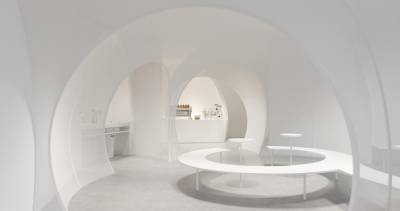Prince Rupert Isn't Any Old Port in Storms
Prince Rupert's normal colours are pale and washed-out: misty greens and endless shades of grey. This, after all, is a city that sports a store named the Slickers Raingear Warehouse. So the blast of bright red that screams at strollers on First Avenue seems uncharacteristic. It belongs to a 1958 La France fire truck, polished to a dangerous intensity, that sits in summer beside the Prince Rupert Fire Museum. It's a good spot, in any season, to begin a cultural walking tour.
The fire museum is a quirky place, the love child of chief Brian Hadland. He will happily tell visitors the story of its main exhibit, an open-air 1925 REO Speedwagon that fought fires in Prince Rupert until 1950, then carried sand and lumber for the tiny Porcher Island community of Oona River. The truck was eventually abandoned and left to decay beside the road, where lush foliage covered it. Extracted in 1985 and returned to its former home, the REO underwent a painstaking three-year restoration. Other museum displays offer a chronicle of urban disasters, from the notorious 1909 fire that destroyed much of the waterfront to the 1976 incineration of the Prince Rupert Hotel.
Farther down First Avenue is the Museum of Northern British Columbia, the city's architectural jewel. This cedar post-and-beam spectacle, constructed in the style of a West Coast First Nation lodge, would do justice to a community 10 times the size of Prince Rupert. Inside, delicate etched glassworks by Markian Olynyk, Brian Baxter, and John Nutter add touches of light to the exhibit areas. The museum has a must-see collection of Tsimshian artifacts and regalia: beaded dance cloaks edged with puffin beaks and Chinese coins; blankets woven from mountain-goat wool; chiefs' headdresses made with wood, abalone, sea-lion whiskers, flicker feathers, ermine skin, goat horn, and grizzly claws.
The basket displays are equally compelling. A lidded Nootka cedar-bark-and-grass container is so tightly twined--at least 10 coils per centimetre--as to be completely waterproof. Other spruce and cedar-root baskets have exquisite patterns decorated with porcupine quills, maidenhair fern, and cherry and birch bark. Such skill and artful care have gone into these utilitarian objects. The work of contemporary basket maker Rena Bolton is featured in the beautiful gallery at the back of the museum that overlooks Prince Rupert harbour and the hills of the Tsimshian Peninsula.
A short distance away--past the visitors' centre and city archives (where some fine historical-photo exhibits are installed) and next to the new dance lodge--pedestrians may come across a large carving shed. Here Henry Green, a Tsimshian artist from Lax Kw'alaams, and his apprentices can be observed as they work on full-length poles and smaller sculptures. Green's art has appeared in galleries and museums across North America; he's also known for his carved canoes and silk-screen prints.
There are memorial and mortuary poles everywhere in Prince Rupert. The most-photographed one is in the minipark next to City Hall, a stylish 1938 art-deco building adorned with First Nation art motifs. But there are dozens of other totems scattered in parks and public spaces. Most are 1970s reproductions of historic poles and include Nisga'a and Haida styles as well as Tsimshian. Ramblers who search them out will discover other facets of Prince Rupert: neighbourhoods of tumbledown houses built on rock outcrops and in gullies, connected by footpaths and steps where the grade is too steep for automobiles.
The city's third museum is beside the harbour, next to the railway tracks. The best way to get there is via Mariners' Marine Park, with its statue memorializing those lost at sea, and its forlorn Japanese fish boat, which drifted, empty, across the Pacific to wash up on a Haida Gwaii beach. Nearby is the imposing 1923 brick courthouse, and beyond that one comes upon Cow Bay, an older part of town now home to restaurants and gifts shops. Next door is the fancy new Atlin Cruiseship Terminal, and farther along the shoreline is Kwinitsa, the small but charming railway museum.
Kwinitsa Station, built in 1911, was one of almost 400 similar structures that went up beside the Grand Trunk Pacific Railway line, between Winnipeg and Prince Rupert. Only four survive today. Originally located 72 kilometres east of the city, it was barged down the Skeena River to the waterfront in 1985 and rehabilitated. A tour through the furnished rooms--the station agent's office with its telegraph and other equipment, the kitchen and pantry, the central family living area, the freight room and bunkhouse for the line workers--reveals what life was like for early GTP workers. Displays and videos detail the building of the railway, the founding of its western terminus at Prince Rupert, the job of transferring Kwinitsa to the ocean, and the operations of a typical station in the 1950s.
After taking in the museum it's pleasant to linger beside the water, where the passing boats--the crimson-hulled coast-guard vessel, gleaming aluminum water taxis, a bright blue-and-yellow harbour ferry--add more surprising touches of colour to the city's bleached-denim skyline. The limited supply of sunshine, however, should not deter travellers, as Prince Rupert is rich in culture and great fun to explore on foot.















Comments